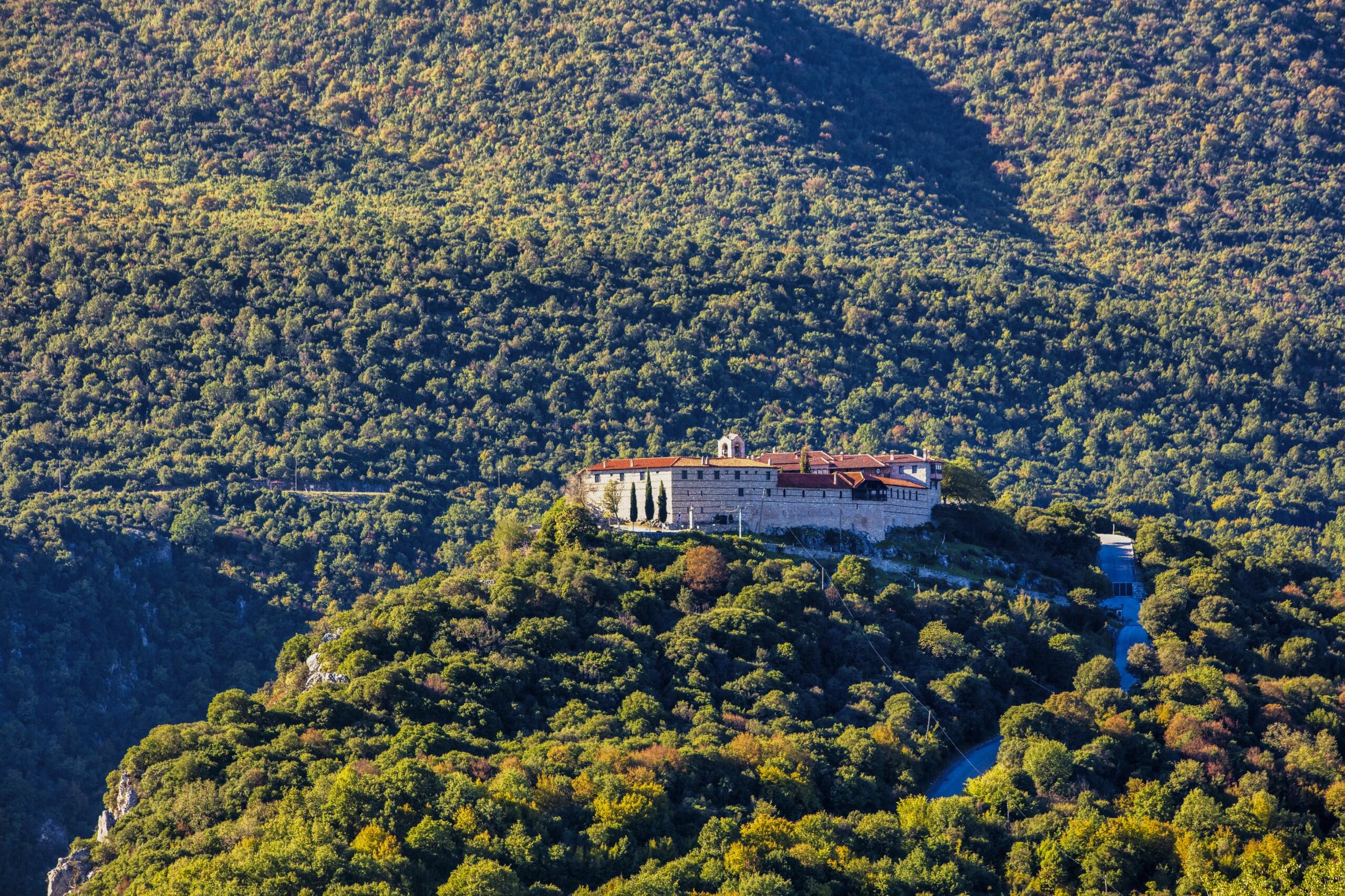Byzantine castle of Servia "Saranta Portes" (Forty Gates)

On the northwestern side of the Byzantine castle of Servia, the ruins of the imposing Basilica of the Catechumens, also known as the Forty Gates, dominate the landscape. This former episcopal church, dedicated to Agios Dimitrios, was built around the year 1000 AD and is an important example of Middle Byzantine architecture.
The three-aisled basilica with a narthex presents particular architectural interest with its elevated central aisle and its skylight. Originally, it was covered with a wooden double-pitched roof over the central aisle and a single-pitched roof over the side aisles, while the aisles were connected through a tribelon. Throughout its tumultuous history, the church underwent significant alterations from the 12th to the 16th century, reflecting different architectural phases.
The mural decoration of the basilica is of particular interest, with three distinct layers of painting. The first layer dates to the 10th-11th century, the second to the 13th century during the episcopacy of Michael, and the third to the 15th-16th century. Excavations conducted between 1995-2000 uncovered important findings, such as the remains of the chapel in the southern aisle and parts of the original floors.
Today, the ruined remains of the basilica bear witness to the multifaceted history of the site, which served for six full centuries. The successive use of the monument from the Middle Byzantine to the Late Post-Byzantine period makes it an invaluable source of information for ecclesiastical architecture and artistic development in the Servia region during the medieval era.